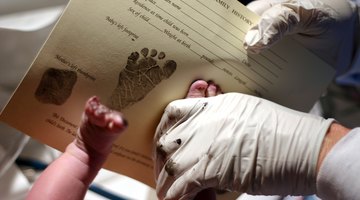How to Determine the Father by Conception Date
Establishing paternity of your unborn child is important. It not only allows you to seek financial and emotional support from the father, but also provides you with access to legal and social benefits and a complete medical history for your child. It also may encourage the father to make or strengthen the bond between himself and the child. Determining the conception date of the child may provide a good indication of who the biological father is, especially if intercourse with the different men occurred more than 10 days apart, according to the American Pregnancy Association.
Get a calendar. Mark the date you first began bleeding from your last menstrual period.
Count 11 days from the date of your last period began. This usually marks the time that many women begin to enter the fertile time of their cycles.
Add 10 days from the first day of you were fertile. This usually marks the end of the fertile period for women with regular menstrual cycles.
Make an appointment for an ultrasound to estimate the week of conception. Get this ultrasound as soon as possible, as ultrasounds in the first trimester and beginning part of the second trimester tend to provide a more accurate estimation of the week of conception. If the ultrasound matches up to the time frame you established with your calendar, it is more likely that the time frame is valid, and that is when conception occurred.
Remember the days during this time period that you had sexual intercourse. If you only had sex with one of the men within this time period, he is most likely the father. If you had sex with more than one man during this time, using the conception date to establish paternity is not possible and DNA testing is necessary.
Tips
Women who were tracking ovulation during the month conception occurred, by tracking fertility signs or using ovulation predictor kits, may have a better indication of when conception occurred. Sperm can survive for approximately three days after intercourse has taken place, according to the National Women’s Health Information Center, so any sexual intercourse that occurred during the few days leading up to ovulation may have been responsible for the pregnancy.
Warnings
Using the conception date to establish paternity is not as reliable or accurate as DNA paternity testing. Women should always have paternity confirmed by DNA testing when establishing paternity for legal purposes.










